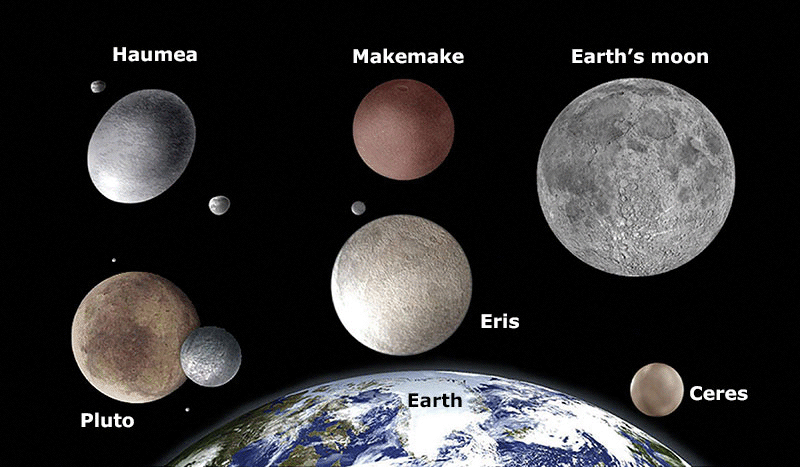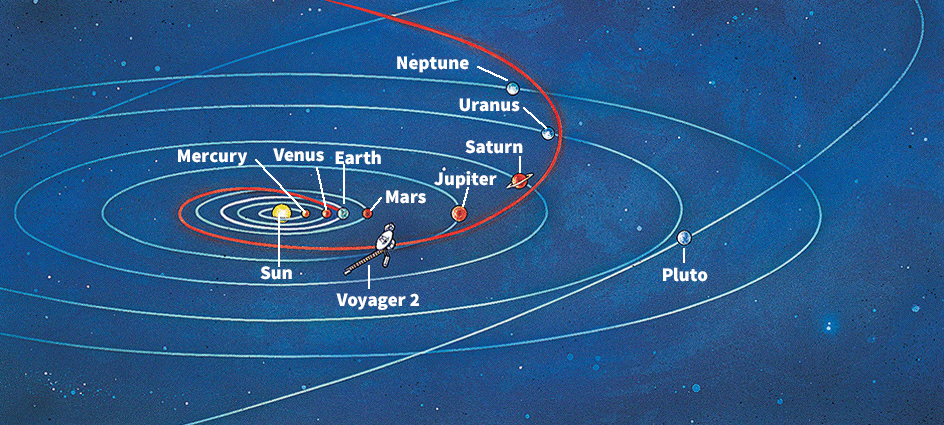Our New Planet Is WAY Out There!
Friday, March 28th, 2014March 28, 2014
A probable dwarf planet that orbits much farther from the sun than any other known object has been discovered by American astronomers Chad Trujillo and Scott Sheppard. The little planet is so far away that its orbit takes it 15 times as far from the sun as the orbit of Neptune, the most distant major planet in the solar system. The astronomers first sighted the object, designated 2012 VP113, or VP for short, using the Dark Energy Camera mounted on the 4-meter Blanco telescope in Chile. However, to confirm the shape of the object’s orbit around the sun, the astronomers needed to watch the object for many months. The would-be dwarf planet VP is the second such object found orbiting the sun at such a vast distance. The first, named Sedna, was discovered in 2003 by a team that included Trujillo. VP appears to be about 280 miles (450 kilometers) across, about half the size of Sedna and the most commonly known dwarf planet, Pluto. Trujillo and Sheppard nicknamed the new dwarf planet Biden, for United States Vice President Joe Biden.
The distance from Earth to the sun is, on average, about 93 million miles (150 million kilometers). This distance is called an astronomical unit or AU. Neptune is about 30 AU from the sun. The orbit of Sedna is a stretched out oval that carries it as far as 1,000 AU from the sun. However, Sedna also comes to within 76 AU of the sun at its closest approach. The orbit of VP is more circular. For this reason, VP doesn’t stray as far as Sedna, only about 450 AU. On the other hand, VP never gets closer than 80 AU to the sun at its closest approach, farther than any other solar system body known.

Dwarf planets Ceres, Eris, Haumea, Makemake, and Pluto and their moons, compared with Earth and its moon. All of these dwarf planets are smaller than the moon. (©UCAR/University of Michigan)
The area to which Pluto and several other dwarf planets belong is called the Kuiper belt. It is the region beyond Neptune and includes millions of icy bodies. Far beyond the Kuiper belt is a region called the Oort cloud, an area thought to be filled with millions of comets. Both Sedna and VP orbit between the Kuiper belt and the Oort cloud. Many astronomers believed this area was empty. The discovery of Sedna and now VP puts that idea into question.
The discovery offers new information about how the solar system was formed. How did such large objects assume orbits so far from the sun? How many are there yet to be found? One interesting conclusion suggested by astronomers studying the new data is that the orbits of Sedna and VP may be influenced by a large, yet undiscovered planet.
Additional World Book articles:
- Ceres
- Eris
- Planet (the dwarf planets)
- Exploring the Suburban Solar System (a Special Report)
- Astronomy (2004) (a Back in Time article)
- Astronomy (2006) (a Back in Time article)




